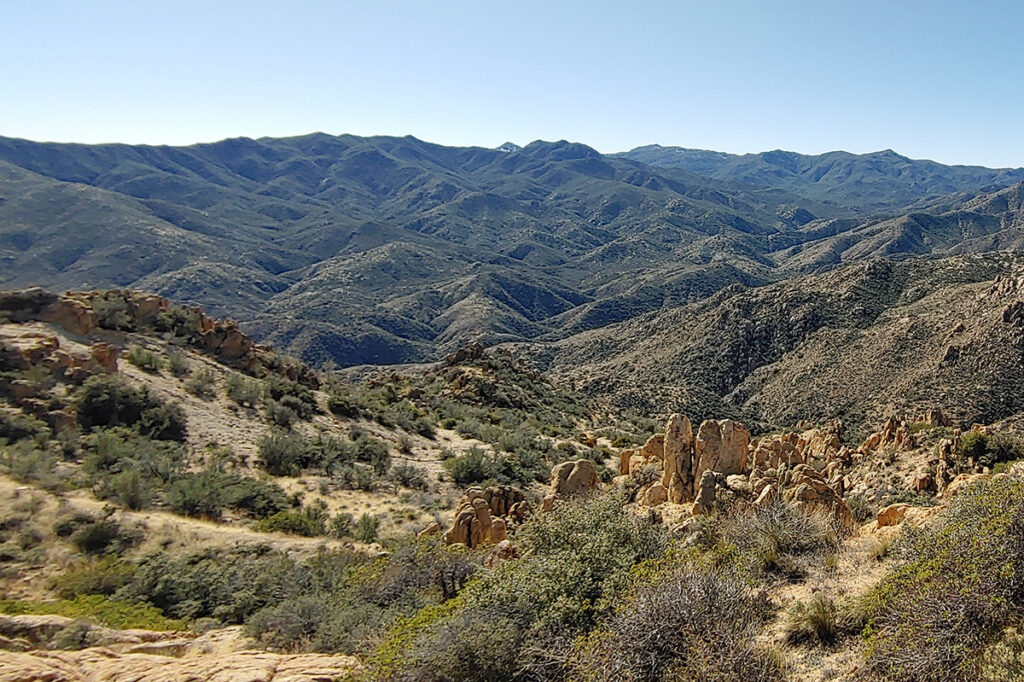Mohave County, Arizona
Highlights:
-
The Company maintains 102 unpatented mining claims for the Diamond Joe Project, designated the DJP (59) and DJ (43) claims.
- Copper-Moly Porphyry Stem. Historic high-grade moly production from U/G veins.
Location:
Diamond Joe is a known porphyry system located in the Hualapai Mountains of Mohave County, Arizona, near the town of Wikieup and is situated in the NW trending belt of porphyry deposits that includes the Bagdad and Mineral Park mines.
Access:
The Diamond Joe exploration target is remote, rugged, and does not currently have good road access.
History:
The system was mined in the early 1900’s for Mo and explored from the 1950’s to the 1970’s for a porphyry Cu system. After several drilling campaigns ending in the 1970’s failed to find economic mineralization, the property was left idle. All the known exploration was performed in granodiorite in the vicinity of the Leviathan Mo mine.
Geology & Mineralization
The Harquahala Mountains are a N-S trending mountain range that are part of the Basin and Range province of the Southwest United States. Paralleling the Harquahalas to the east are the Mohon Mountains, and between the two mountain ranges is a basin, part of the Basin and Range province opened during the Tertiary extension event. The Harquahala Mountains primarily consist of Precambrian granitic and metamorphic basement rocks, with a minor volume of intruding Laramide age stocks including Diamond Joe. Late Paleozoic to early Tertiary volcanic rock once covered much of the region but has mostly been eroded away save for the eastern flank of the Mohon Mountains. The basin occupied by the Big Sandy River was rapidly filled with colluvium as it was opening, with greater than 1,500 m of fill in places (Bell Copper 2022 Corporate Presentation).
Diamond Joe has evidence of multiple pulses of magmatic fluid moving through. The presence of relatively high grade Mo mineralization in the Leviathan area and relatively high grade Cu mineralization at the top of the system in the Diamond Joe vein indicates that there were separate Cu and Mo mineralizing events, as is typical of Mo-Cu porphyry systems (In the vicinity of the Leviathan Mine the high Mo/Cu ratio is similar to what is seen at depth in other systems like the Continental Pit, Butte). This is further evidenced by the minor Cu in the Leviathan area, which was likely a secondary enrichment during a later Cu rich fluid pulse.
There are multiple lines of evidence that strongly suggest that if a porphyry Cu orebody formed at the Diamond Joe, it is still there, located at depth below the Silvertrails vein system at the center of both the porphyry and the hydrothermal system.
Exploration Plan
As with any blind porphyry target drilling is the only path to discovery, but both geophysical methods and detailed mapping should be completed beforehand to identify targets and guide a drill program which would include drilling a handful of deep diamond holes to test geophysical anomalies.




